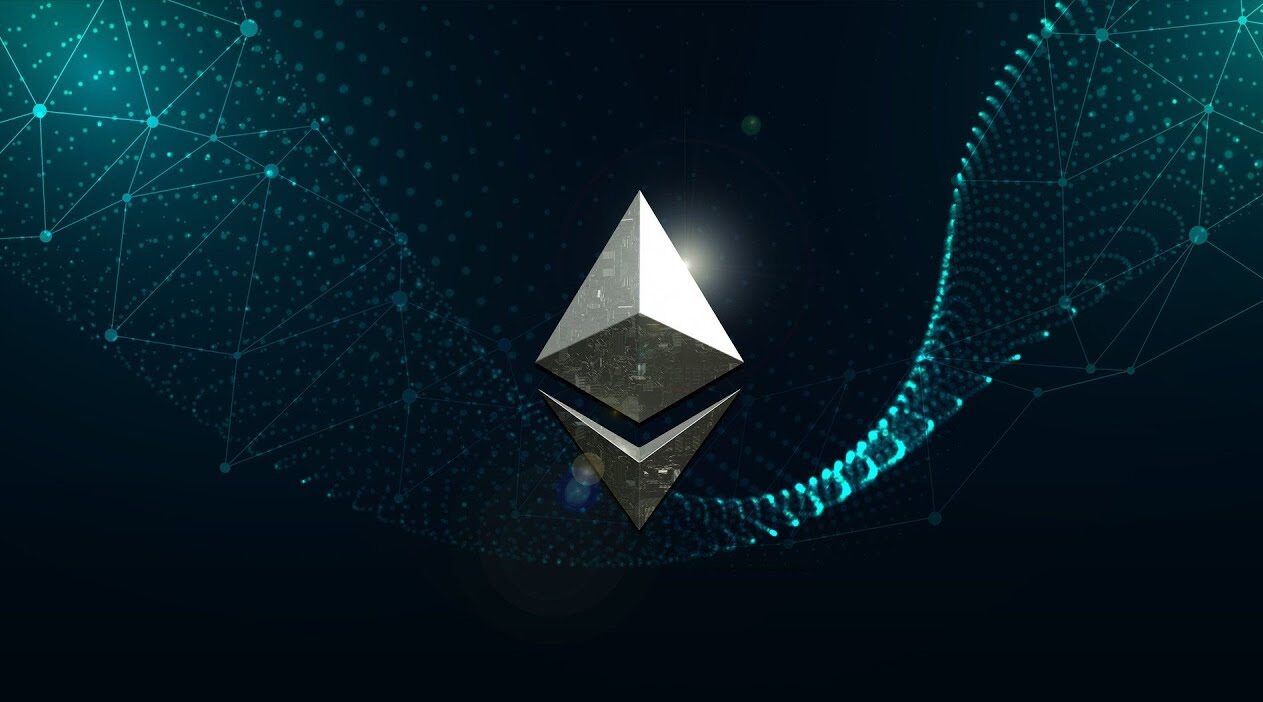Ethereum Burn Rate and EIP-1559’s Market Impact in 2025

The Ethereum blockchain has undergone one of the most significant monetary policy transformations in cryptocurrency history through its implementation of token-burning mechanisms. Since the activation of EIP-1559 in August 2021. Ethereum token burn EIP-1559 approach to transaction fees and supply management has fundamentally altered the economic dynamics of the world’s second-largest blockchain network. Understanding the implications of Ethereum’s token burn reports provides crucial insights into the network’s deflationary mechanisms, supply economics, and long-term value proposition for stakeholders across the decentralised finance ecosystem.
Ethereum’s Token Burn Mechanism
The foundation of Ethereum’s token burn system lies in the Ethereum Improvement Proposal 1559, commonly known as EIP-1559, which introduced a revolutionary fee structure that fundamentally changed how transaction costs are processed on the network. EIP-1559 will burn a significant portion of the transaction fees on Ethereum while introducing variable block sizes to improve efficiency, creating a direct correlation between network usage and token scarcity.
The burning mechanism operates through a systematic destruction of base fees, which are the minimum fees required for transaction inclusion in Ethereum blocks. Anytime the Ethereum network is used, ETH is burned—meaning that every time a trade is made on Uniswap, or users rush to ape into new opportunities, a portion of the transaction fees is permanently removed from circulation. This process sends the burned ETH to a defunct address, effectively reducing the total supply of Ethereum tokens in circulation.
The network upgrade included a specific improvement called EIP-1559, which was designed to simplify how transaction fees are paid. But part of the new mechanism involves burning a portion of the transaction fees, removing them from the circulating supply of coins. This dual purpose of fee simplification and supply reduction has created what many cryptocurrency enthusiasts refer to as “ultrasound money,” a concept that positions Ethereum as potentially deflationary under certain network conditions.
Current Burn Statistics and Market Impact
Recent data reveals the substantial impact of Ethereum’s burning mechanism on the network’s token supply. Since the EIP-1559 change in Ethereum, which occurred in August 2021, the network has sent 4.5 million ETH to dead wallets with the most recent data available as of April 14, 2025. This massive destruction of tokens represents billions of dollars in value permanently removed from circulation, creating deflationary pressure that influences Ethereum’s market dynamics.
The daily burn rate varies significantly based on network activity and transaction volume. According to data from Glassnode, Ethereum’s net token burn rate as of May 6, 2025, stands at approximately 3,200 ETH burned daily, demonstrating the ongoing impact of the burning mechanism on supply reduction. However, this rate fluctuates based on network congestion, decentralised application usage, and overall blockchain activity levels.
Historical analysis shows periods of intense burning activity that have temporarily made Ethereum deflationary. The mechanism removes about $30 million ETH from circulation each day by sending it to a defunct address, though this figure represents historical data, and current daily burn amounts vary considerably based on network utilisation patterns.
Ultrasound Money Narrative and Economic Theory
The concept of “ultrasound money” has emerged as a central theme in Ethereum’s economic positioning, building upon Bitcoin’s “sound money” narrative while introducing the additional element of potential deflation. Ultra sound money is an Ethereum meme focusing on the likely decrease of the ETH supply. If capped-supply gold is sound, decreasing-supply ether is ultra sound. This positioning attempts to differentiate Ethereum from Bitcoin by suggesting that decreasing supply could create superior monetary properties.
The ultrasound money thesis depends on the relationship between token burning and new token issuance through staking rewards. The ETH supply decreases whenever more ETH is destroyed via fee burn than ETH is created via issuance. Fee burn is a scarcity engine fuelled by Ethereum’s transactional utility. This mechanism creates a direct connection between network adoption and token scarcity, theoretically aligning the economic interests of token holders with network growth and utility.
However, the ultrasound money narrative faces challenges from evolving network dynamics and changing usage patterns. Ethereum’s inflation rate reaches a two-year high as layer-2 platforms reduce ETH burn, challenging the deflationary “ultrasound money” narrative. The growth of Layer 2 scaling solutions, while beneficial for network scalability and user experience, reduces the transaction volume on the main Ethereum chain, consequently decreasing the amount of ETH burned through base fees.
Layer 2 Impact on Burn Dynamics
The proliferation of Layer 2 scaling solutions presents both opportunities and challenges for Ethereum’s burning mechanism. These solutions, including Arbitrum, Optimism, Polygon, and other rollup technologies, process transactions off the main Ethereum chain while periodically settling batches of transactions on the primary network. This architectural approach significantly reduces transaction costs for users but also diminishes the frequency and volume of fee-burning events on the main chain.
Layer 2 solutions create a complex dynamic where network scalability improvements may reduce the deflationary pressure that burning mechanisms provide. As more transactions migrate to Layer 2 platforms, the base layer experiences reduced congestion and lower fee pressure, resulting in decreased burn rates. This trend has contributed to periods where Ethereum’s inflation rate increases, moving the network away from deflationary territory.

The long-term implications of Layer 2 growth on Ethereum’s monetary policy remain a subject of ongoing analysis and debate within the cryptocurrency community. While these solutions improve user experience and enable broader adoption, they fundamentally alter the economic dynamics that drive token burning, requiring careful consideration of how supply mechanisms may evolve alongside scaling solutions.
Supply Dynamics and Inflationary Pressures
Recent market data indicates that Ethereum has experienced periods of inflation despite the burning mechanism. Ethereum was deflationary for six quarters, but has since turned inflationary in 2024 Q2, adding 75,301 ETH to the network in 2024. This shift demonstrates that burning alone is insufficient to guarantee deflationary outcomes, as the mechanism’s effectiveness depends on network activity levels and the balance between token creation through staking rewards and token destruction through fee burning.
The relationship between staking yields and burn rates creates complex supply dynamics that influence Ethereum’s monetary policy. As more ETH becomes staked to secure the network under the proof-of-stake consensus mechanism, the issuance of new tokens through staking rewards continues regardless of burn rates. The net effect on supply depends on whether burning exceeds issuance, a balance that fluctuates based on network utilization patterns.
Current projections suggest varying outcomes for Ethereum’s supply trajectory. The supply of ETH is expected to grow 0.76% per year taking the burn rate from the last 7 days into account, according to Ultrasound.money data. This projection illustrates how recent network activity levels, if sustained, would result in modest inflation rather than the deflationary scenarios that characterized certain periods following EIP-1559 implementation.
Market Sentiment and Price Implications
The token burning mechanism has become a significant factor in market sentiment and price analysis for Ethereum. The upgrade will negatively impact Ethereum miners but will add value to ETH. Holders can achieve this by making the asset more scarce, creating theoretical upward pressure on token prices through supply reduction. This scarcity mechanism has been compared to Bitcoin’s halving events, which historically have preceded significant price appreciation cycles.
Investment analysts and cryptocurrency market participants closely monitor burn rates as indicators of network health and potential price catalysts. High burn rates signal substantial network utilisation and suggest robust demand for Ethereum’s computational resources. Ethereum token burn EIP-1559, while low burn rates may indicate a reduced network. Activity or successful migration of transactions to Layer 2 solutions.
The psychological impact of burning on market participants extends beyond the direct supply effects. The concept of permanent token destruction creates a narrative of increasing scarcity that resonates with investors familiar with traditional economic principles, where reduced supply, combined with steady or increasing demand, typically results in price appreciation.
Technical Implementation and Monitoring Tools
Understanding Ethereum’s burn mechanism requires familiarity with the technical infrastructure that enables and tracks token destruction. The London upgrade for Ethereum contained a change referred to as EIP-1559, which was focused on simplifying the transaction fee process. It splits the fees into two: a base fee that gets burned and a priority fee that is effectively a tip to the miner. This fee structure creates transparency in the burning process while maintaining incentives for transaction validators.
Multiple platforms and tools provide real-time monitoring of Ethereum’s burn statistics. Watch Ethereum burn ETH in real-time, per block, as an ultra-sound money. Creating a sense of deflation through specialised tracking websites that visualise. The burning process provides comprehensive statistics on burned amounts, burn rates, and supply impacts.
These monitoring tools serve various stakeholders, including investors, tracking supply dynamics. Researchers analysing network economics and developers building applications. That depends on understanding fee structures. The transparency provided by blockchain infrastructure enables comprehensive analysis. Burning patterns and their correlation with network activity, market conditions, and technological developments.
Comparative Analysis with Other Cryptocurrencies
Ethereum’s approach to token burning represents one of several strategies that cryptocurrencies employ to manage supply and create deflationary pressure. The upgrade known as Ethereum Improvement Proposal (EIP) 1559 is similar. Analysts said, to a bitcoin “halving” event in which periodic adjustments reduced the supply of bitcoin. However, Ethereum’s continuous burning mechanism differs significantly. Bitcoin’s predetermined halving schedule creates more dynamic supply adjustments based on actual network utilisation.
Other blockchain networks have implemented various burning mechanisms, including scheduled burns, transaction-based burns, and governance-driven burns. Ethereum’s approach stands out for its direct connection to network utility. Token scarcity creates a feedback loop where increased adoption theoretically leads to reduced supply and potential price appreciation.
The effectiveness of different burning approaches varies based on network design, usage patterns, and economic models. Ethereum’s mechanism has demonstrated both the potential for significant deflationary periods. The challenges of maintaining a consistent supply reduction. Ethereum token burn EIP-1559, in the face of evolving network architecture and scaling solutions.
Summary
Ethereum’s token burn reports reveal a complex and evolving economic system. That attempts to balance network utility, supply management, and stakeholder value creation. The implementation of EIP-1559 has created unprecedented transparency in token destruction. In comparison, introducing dynamic supply adjustments that respond to network utilisation patterns. Understanding these mechanisms provides essential insights for anyone participating in or analysing the Ethereum ecosystem.
The challenges facing the ultrasound money narrative. Particularly from Layer 2 scaling solutions, the ongoing tension between scalability improvements and supply management mechanisms is highlighted. As Ethereum continues evolving to meet the demands of a global computational platform. The role and effectiveness of token burning will likely require adaptation and refinement.
